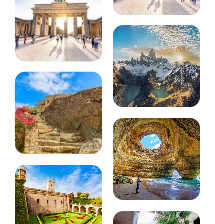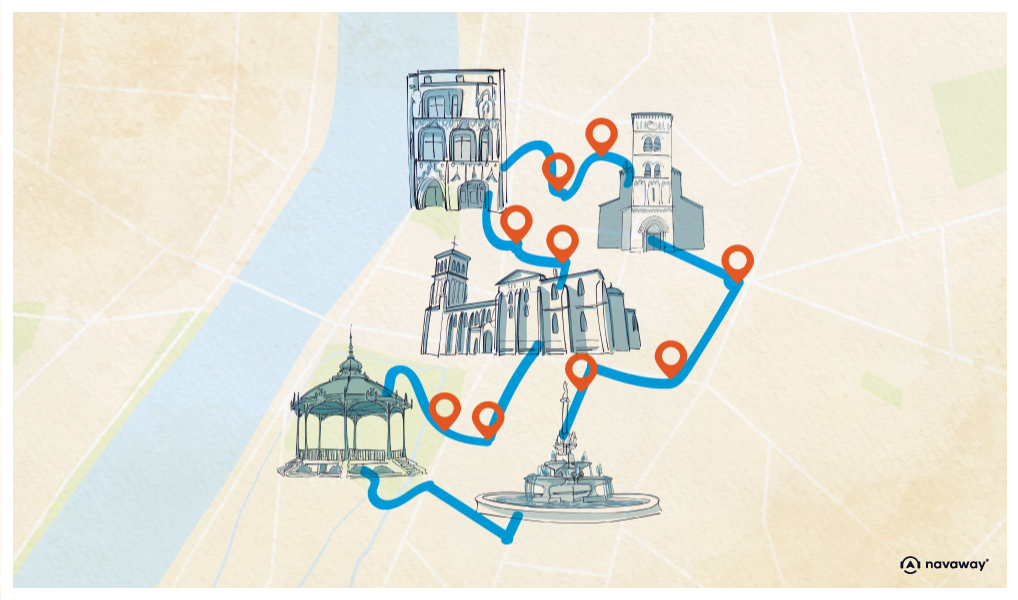
14 must-see places to visit in the Ardèche
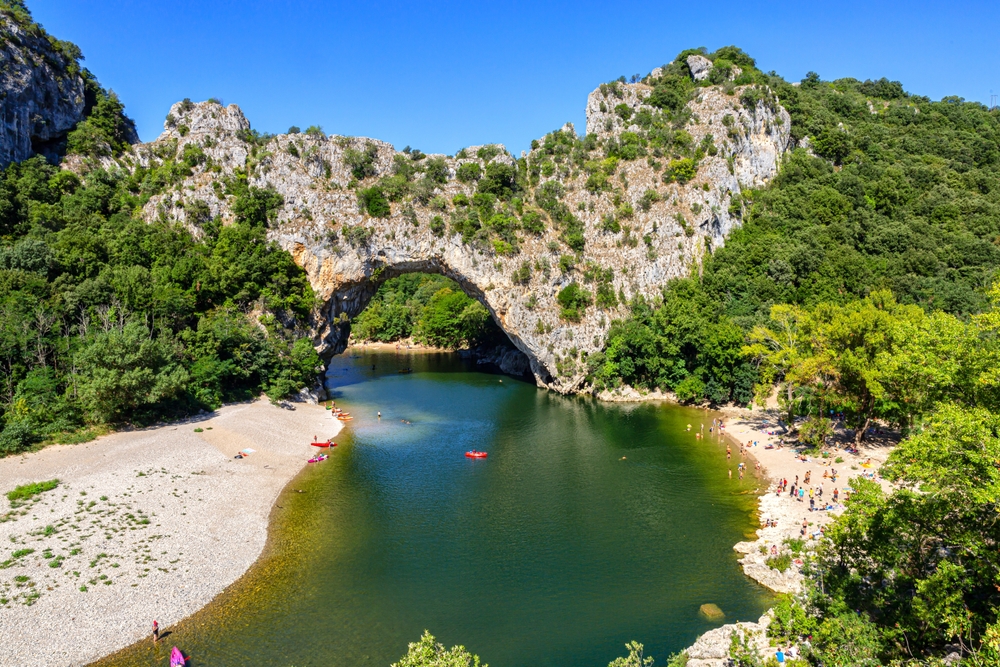
Wild, authentic and unspoilt, the Ardèche is a destination that will win you over with the diversity of its landscapes and the richness of its natural heritage. With its spectacular gorges, hilltop villages, prehistoric caves and lush green mountains, this département in south-east France offers an unforgettable getaway for lovers of nature and authenticity. Whether you’re a white-water sports enthusiast, a history buff or simply looking for a change of scenery, a visit to the Ardèche promises to be a memorable experience. Discover our selection of the 14 must-do things to do in the Ardèche to make the most of this exceptional region.

Read also about Ardèche:
- Top 10 of the most beautiful villages in the Ardèche
- 11 must-see spots for mountain biking in France
- 20 must-see weekend ideas around Lyon
- The 9 most beautiful villages to discover in the Cévennes
- France’s most beautiful national and nature parks
- 15 not-to-be-missed excursions around Lyon
1. Canoeing down the Ardèche gorges
It’s impossible to visit the Ardèche without enjoying the legendary experience of descending the Ardèche gorges in a canoe or kayak. This 32-kilometre natural canyon, carved out between Vallon-Pont-d’Arc and Saint-Martin-d’Ardèche, is a spectacular sight with limestone cliffs up to 300 metres high.
There are several options to choose from: an 8km mini-descent ideal for families, a 24 or 32km day trip for the more sporty, or a two-day descent with a bivouac at the Gaud or Gournier areas for total immersion. Passing under the majestic Pont d’Arc, a 54-metre-high natural arch, is the high point of this unforgettable aquatic adventure.
2. Admire the Pont d’Arc, a natural wonder of the Ardèche

The Pont d’Arc is a spectacular natural arch carved into the limestone rock by the River Ardèche. At 54 metres high and 60 metres wide, this geological formation is one of the most imposing in Europe.
You can admire the river from the viewpoints on the heights, or better still, canoe under it to fully appreciate its majesty. The beach above the bridge is also a popular spot for swimming and relaxing in summer. This listed natural site marks the entrance to the Ardèche gorges and offers breathtaking panoramas, particularly at sunset.
3. Explore Grotte Chauvet 2, the jewel of prehistory
A UNESCO World Heritage Site, Grotte Chauvet 2 is a faithful recreation of the original Chauvet cave, discovered in 1994. The cave contains the oldest known cave paintings in the world, dating back 36,000 years – twice as old as those at Lascaux.
The guided tour plunges you into the fascinating world of our ancestors, with over 1,000 drawings representing 14 different animal species: mammoths, cave lions, woolly rhinoceroses, bears, etc. The artistic quality and diversity of the techniques used bear witness to the creative genius of Homo sapiens. This exceptional site is a must for understanding the beginnings of cave art and visiting the Ardèche from a prehistoric perspective.
4. Discover the Aven d’Orgnac underground cathedral
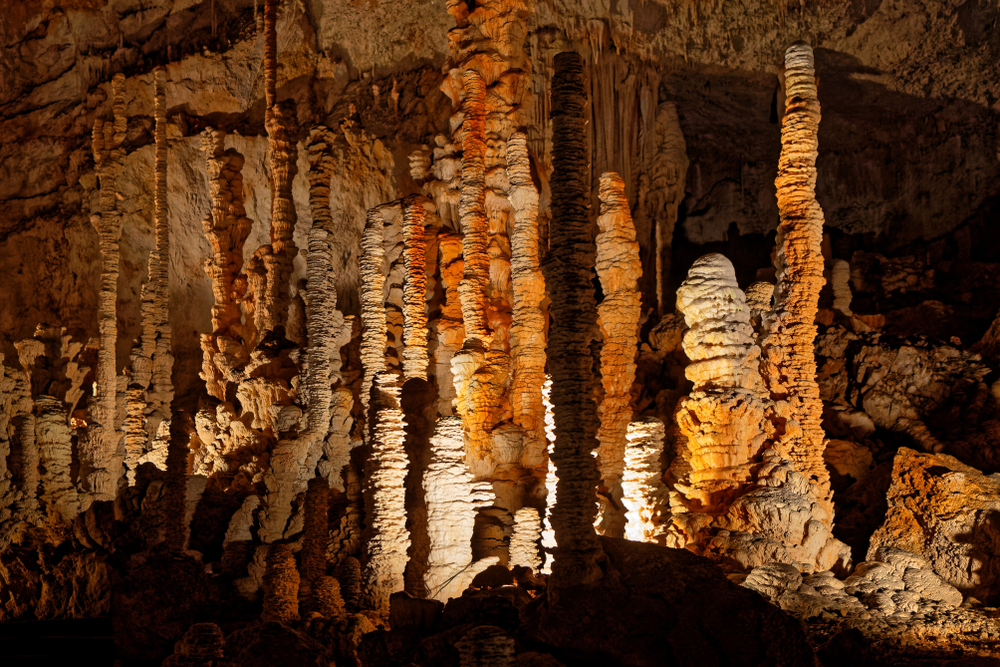
The Aven d’Orgnac is one of the most beautiful caves in France, and has been awarded the Grand Site de France label. This natural cave will amaze you with its impressive dimensions and the richness of its concretions. The descent is via a staircase of 720 steps that takes you 121 metres underground, into monumental chambers with evocative names: the Salle Rouge, the Salle Supérieure and the majestic Salle des Salles.
Thousand-year-old stalagmites and stalactites have created an enchanting setting, magnificently enhanced by subtle lighting. The constant temperature of 12°C all year round keeps things cool in summer. The site also includes the Cité de la Préhistoire, a modern museum space that traces 350,000 years of human history in the Ardèche.
5. Hike to the Ray-Pic waterfall
At the heart of the Monts d’Ardèche Regional Nature Park, the Ray-Pic waterfall is a natural spectacle of rare beauty. The waters of the River Bourges plunge 60 metres down a basaltic lava flow, creating a succession of black volcanic organs that contrast with the white foam of the waterfall.
Accessible after a 15-minute walk from the car park, the site has been listed since 1931. Two lookouts offer spectacular views of this geological wonder. Although swimming is prohibited for safety reasons, the cool, green atmosphere makes it a refreshing stop-off on your visit to the Ardèche.
6. Climb Mont Gerbier de Jonc, source of the Loire
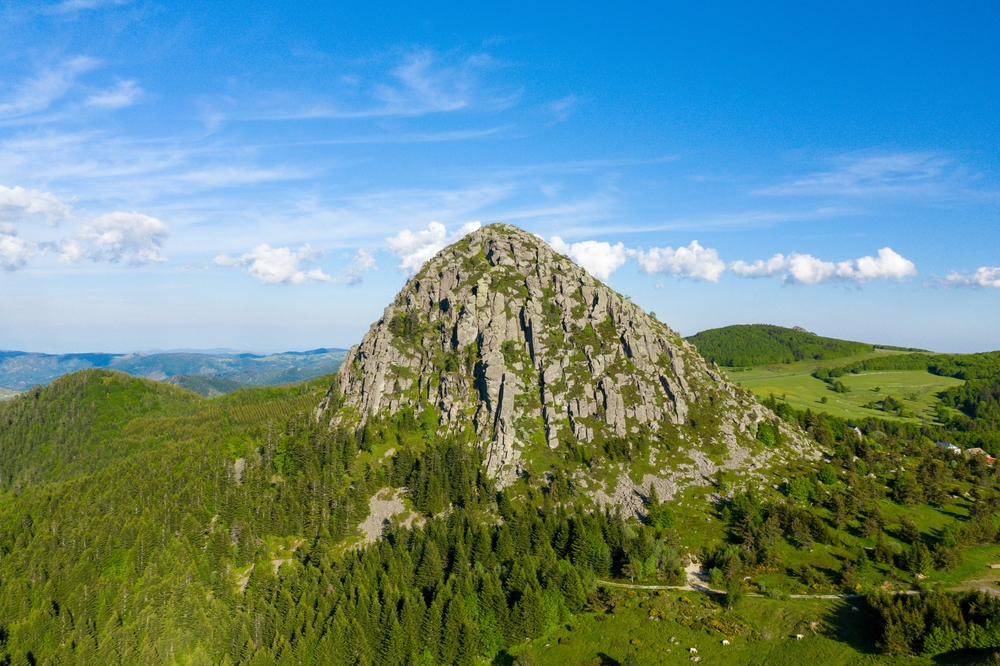
At an altitude of 1,551 metres and with its distinctive sugar loaf shape, Mont Gerbier de Jonc is one of the most iconic peaks in the Ardèche. This volcanic neck, the remnant of an ancient volcano, offers an exceptional 360° panorama of the surrounding sucs and the Ardèche mountains.
The climb, which is accessible to all, takes just thirty minutes from the car park. At the foot of the mountain gush the springs of the Loire, France’s longest river. Three main springs feed the royal river, whose crystalline resurgences you can see for yourself. It’s a place steeped in symbolism and a must-see for anyone interested in geology and wide open spaces wishing to visit the Ardèche.
7. Stroll through the most beautiful villages in the Ardèche
The Ardèche is home to many picturesque villages perched on rocky outcrops that have managed to preserve their authenticity. Balazuc is one of the most beautiful villages in France, with its cobbled streets, medieval castle and golden stone houses clinging to the cliffs overlooking the Ardèche.
Vogüé, another listed Ardèche gem, is built around its imposing 12th-century feudal castle. The village unfurls its colourful facades along the river, creating photogenic vistas around every corner. Labeaume, with its slate roofs and pebble beach on the banks of the Beaume, offers a picturesque and peaceful atmosphere. And don’t forget Saint-Montan and its two châteaux, Antraigues-sur-Volane, the village of Jean Ferrat, or Alba-la-Romaine and its ancient heritage.
8. The panoramic route of the Ardèche gorges
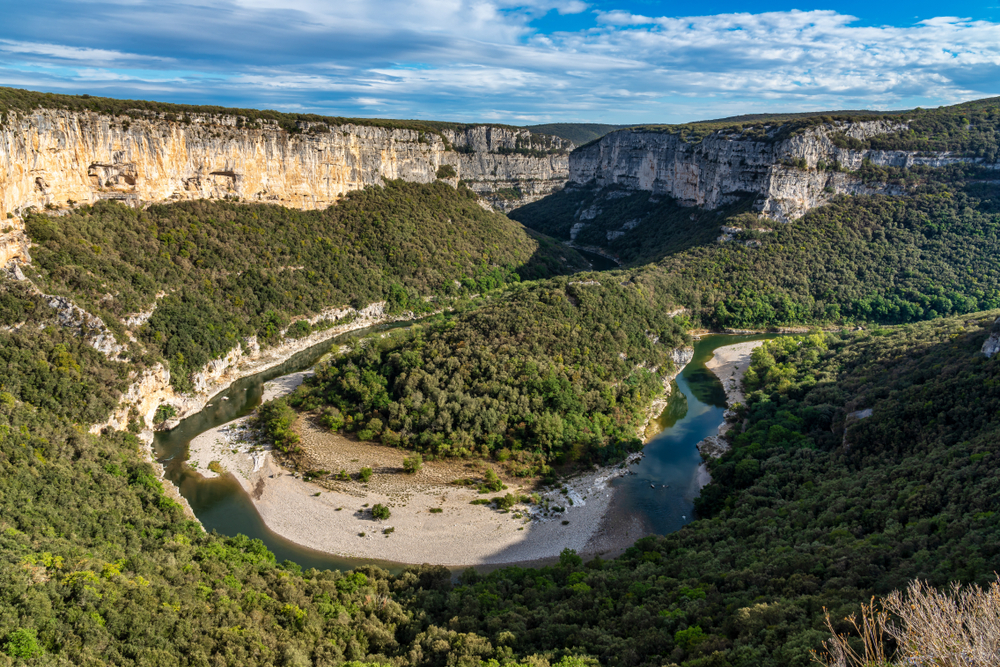
For those who prefer to admire the scenery in complete tranquillity, the tourist route of the Ardèche gorges (D290) is an experience not to be missed. This 30-kilometre coastal road links Vallon-Pont-d’Arc to Saint-Martin-d’Ardèche, and overlooks the river for several hundred metres.
There are a dozen lookouts along the route, offering breathtaking views of the meandering river and limestone cliffs. Among the most spectacular are the Madeleine lookout with its plunging view, the Cathedral lookout and the Ranc Pointu lookout. This winding route allows you to visit the Ardèche from a different angle, and is a perfect alternative for families with young children.
9. Canyoning in the Ardèche gorges
The Ardèche is an exceptional playground for thrill-seekers. Canyoning allows you to discover wild, unspoilt gorges by combining water trekking, jumping, natural slides and abseiling. The most famous sites are the Chassezac gorges, the Besorgues canyon and the Borne canyon.
Supervised by qualified instructors, these routes are suitable for all levels, from beginner to advanced. It’s an original and fun way to visit the Ardèche, literally immersing yourself in its most secret landscapes. The crystal-clear waters of the Ardèche rivers and the wild beauty of the canyons guarantee unforgettable memories.
10. Explore the Païolive wood, a mineral forest

The Bois de Païolive is a unique natural site in the southern Ardèche. This forest of white oaks extends over 16 km² and conceals a veritable labyrinth of strangely shaped limestone rocks, sculpted by erosion over thousands of years. Bear, lion, elephant… everyone’s imagination brings these surprising rock formations to life.
There are several signposted trails through this rocky chaos, through which the Chassezac gorges flow. The wood is also home to prehistoric remains and remarkable biodiversity. It’s an ideal place for a family hike, where mineral and plant life combine in a mysterious and enchanting atmosphere.
11. Visit the vineyards and taste Ardèche wines
The Ardèche wine region covers 14,000 hectares and enjoys exceptional sunshine. The department produces top-quality red, rosé and white wines, notably under the Côtes du Rhône and Côtes du Rhône Villages appellations. Syrah, Grenache and Viognier grapes flourish on the sunny hillsides.
Numerous cellars and estates welcome you for tastings and tours. The Ardèche wine route winds its way through magnificent landscapes, terraced vineyards and hilltop villages. This is your chance to discover the Ardèche terroir and take home a few bottles as a souvenir of your stay. Some wineries even offer introductory wine-tasting workshops to help you learn more.
12. Discovering our medieval and Renaissance heritage
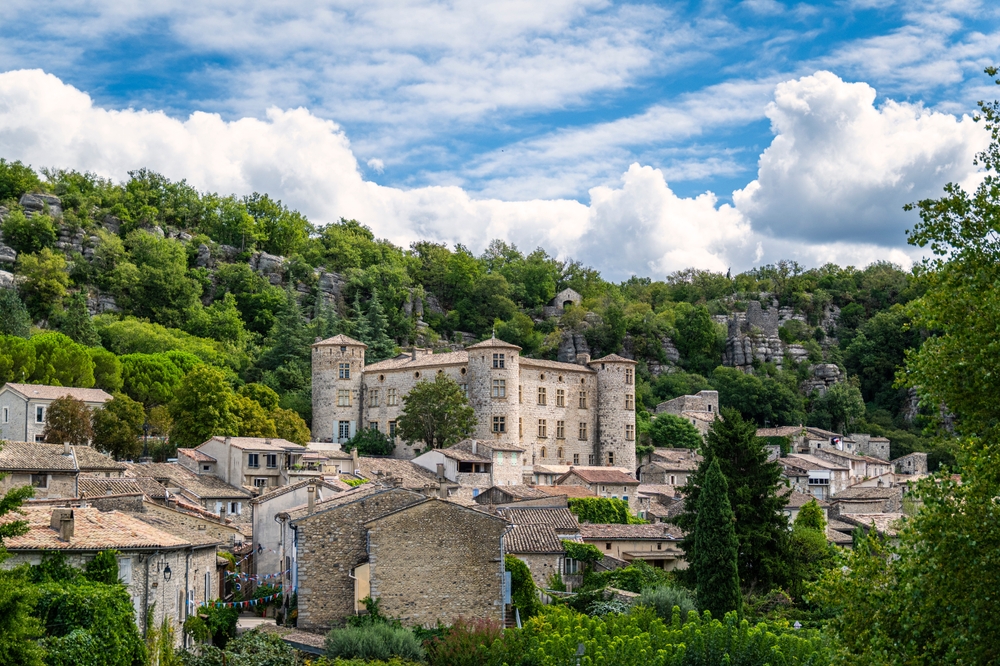
History has left its mark on the Ardèche, and the département boasts some remarkable châteaux and historic sites. The Château de Vogüé, a 12th-century fortress overlooking the village of the same name, is open to visitors and regularly hosts contemporary art exhibitions. The Château de Crussol, perched on its rocky ridge opposite Valence, offers romantic ruins and a breathtaking view over the Rhône valley.
In Annonay, birthplace of the Montgolfier brothers, you can discover the region’s industrial heritage and take a hot-air balloon ride over the Ardèche countryside. Fortified medieval towns such as Largentière, the former capital of the Vivarais region, and Templar villages bear witness to the rich history of this region to visit in the Ardèche.
13. Swimming in rivers and natural beaches
The Ardèche has plenty of river bathing spots, particularly popular on hot summer days. The pebble beaches along the Ardèche and its tributaries offer crystal-clear waters and unspoilt natural settings. Some of the most famous are the Sauze beach at Saint-Martin-d’Ardèche, the Bords de l’Ardèche at Balazuc, and the Pont d’Arc beach.
The cool but refreshing water temperature varies between 18 and 22°C in summer. These places of natural relaxation offer a combination of swimming, relaxing on the pebbles and water sports in an authentic environment. Be careful, however, to follow the safety instructions, as the currents can be strong after storms.
14. Savour Ardèche gastronomy

Visiting the Ardèche also means discovering a generous and authentic gastronomy, marked by local produce. Chestnuts, grown for centuries, come in all shapes and sizes: chestnut purée, jam, flour for breads and cakes. Picodon, a small AOC goat’s cheese with a pronounced flavour, is the department’s emblematic cheese.
Caillettes, pâtés made with pork and chard, crique (grated potato pancakes), maôche (stuffed pork belly) and local charcuterie will delight fans of traditional cuisine. And don’t forget the red fruits, wild mushrooms and lavender or chestnut honey. The local markets are full of these gastronomic treasures, which you can sample on the spot or take home with you.
Frequently asked questions about visiting the Ardèche
When is the best time to visit the Ardèche?
The best time to visit the Ardèche is from May to September. June and September offer an excellent compromise, with pleasant weather and fewer tourists than in July and August. For water sports, July and August are the warmest months. Spring (April-May) is ideal for hiking, with nature in full bloom, while autumn offers magnificent colours and a peaceful atmosphere.
How long will it take to visit the Ardèche?
To discover the main sites and activities in the Ardèche, plan a minimum of 4 to 5 days. A 3-day weekend will allow you to discover the gorges and a few villages, but a full week will give you time to explore the department at your leisure, take part in a number of activities and enjoy the local atmosphere to the full without rushing.
Can you visit the Ardèche with children?
Absolutely! The Ardèche is the perfect destination for families. Children love canoeing (suitable for children aged 7 and over), swimming in rivers, exploring caves and medieval villages. There are plenty of activities just for them: the Peaugres Safari, the Grotte Chauvet 2 with its fun trail, and beaches with play areas. The hiking trails are varied and suitable for all levels.
Where to stay to visit the Ardèche?
The Ardèche offers a wide range of accommodation. Vallon-Pont-d’Arc is an ideal base for exploring the gorges. Charming villages such as Balazuc, Vogüé and Labeaume offer authentic gîtes and B&Bs. For a nature break, opt for a riverside campsite. The towns of Aubenas and Annonay offer more services and facilities. Book in advance in high season (July-August).
In conclusion, visiting the Ardèche offers a complete experience combining unspoilt nature, an exceptional heritage and an authentic way of life. With its spectacular gorges, thousand-year-old caves, hilltop villages and varied landscapes, this département will appeal to all types of traveller. Whether you’re a sports enthusiast in search of adventure, a lover of cultural heritage or simply looking for tranquillity in the heart of a generous natural environment, the Ardèche promises a holiday rich in discovery and emotion. Don’t wait any longer to explore this exceptional region, which has managed to preserve its wild and welcoming character.
200 audioguided tours for cities all around the world
Download